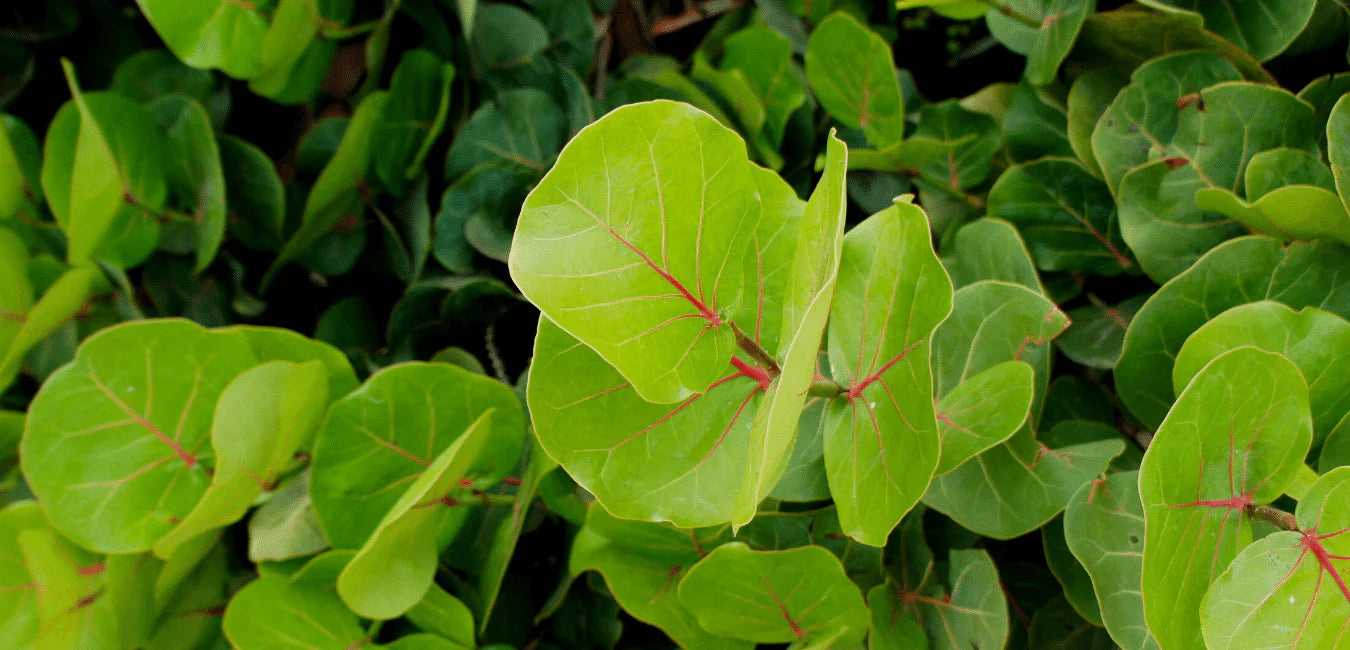Coccoloba are known for their large (sometimes huge) leaves. Growing as trees or shrubs in the wild, they have an elegant form that makes them appealing houseplants.

COCCOLOBA
Varieties from our listing
Interested to buy a plant from this group?
See what we have available HERE
Below is a general care guide for Coccoloba plants which can slightly differ depending on variety.
Light & Temperature
Coccoloba need good amounts of light and will grow best in areas that get direct sun such as balconies or window ledges. They will tolerate light shade.
Coccoloba enjoy warm temperatures and can take the heat.
Watering, Humidity & Misting
Coccoloba are fairly drought tolerant but should be watered at least once every week if given direct sun.
Soil and Repotting
Coccoloba prefer sandy, well-draining soil but tolerate a range of soil types.
Coccoloba will need repotting every 2 years or so, each time sizing up the pot slightly.
Propagation
Coccoloba can be propagated from seeds or cuttings. Sever a branch and repot in peat moss, potting mix and sand, keeping the cutting moist and in a sunny area.
Fertiliser
Use a balanced fertiliser formulated for houseplants. Follow directions on the label of plant food.
Toxicity
Coccoloba are non-toxic and are therefore safe around kids and/or pets. The fruit of SeaGrape can be eaten.
Possible Issues
Under the right care and conditions, your plant will grow happy and healthy. But here are some issues you may encounter while caring for a Coccoloba:
Scale, or fungal infestations - When spotted, wipe the leaves and stems with a soft cloth with warm, soapy water or neem oil.
Brown tips on leaves - This is a sign that the plant is being overwatered. Check that the soil is damp but not wet and is well draining.
Drooping leaves - This can be caused by a myriad of reasons: underwatering, overwatering, root rot and fungal infection.

